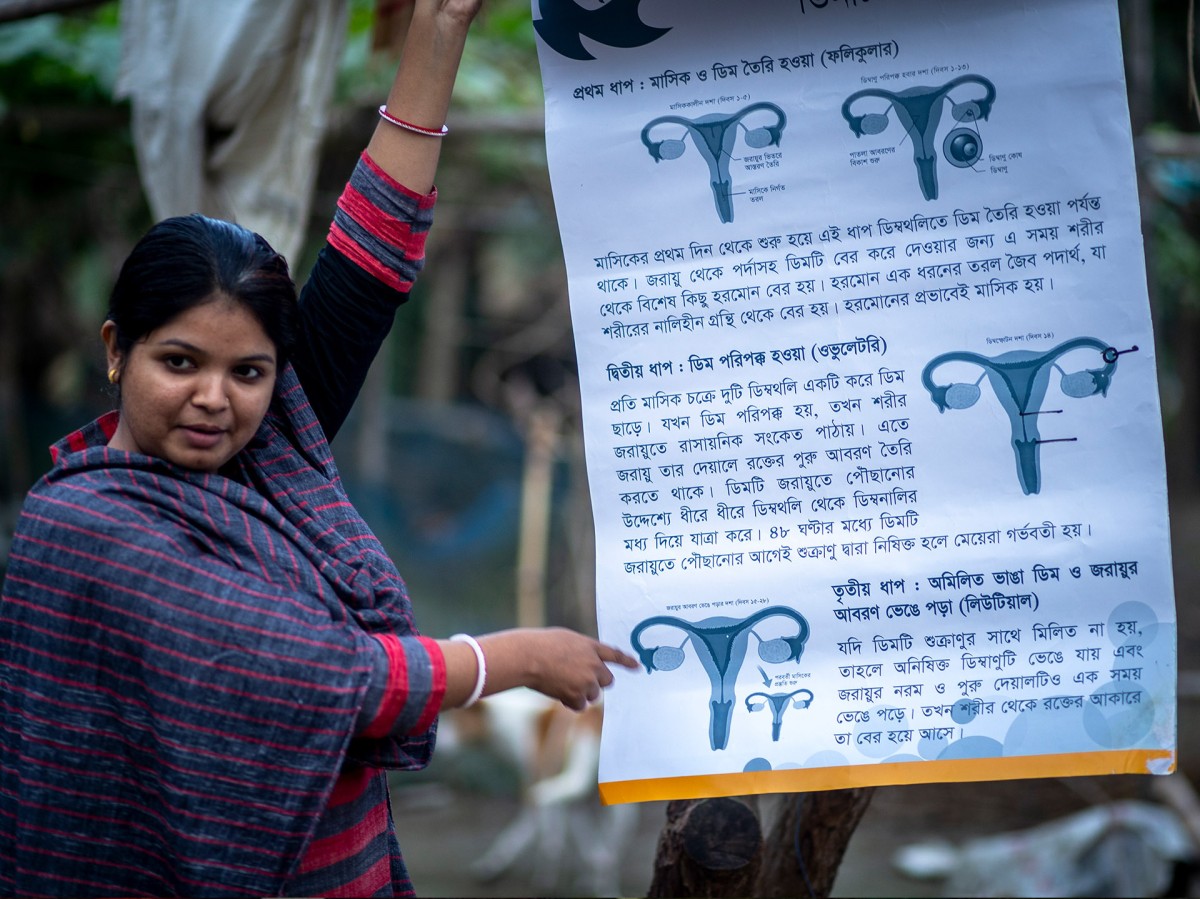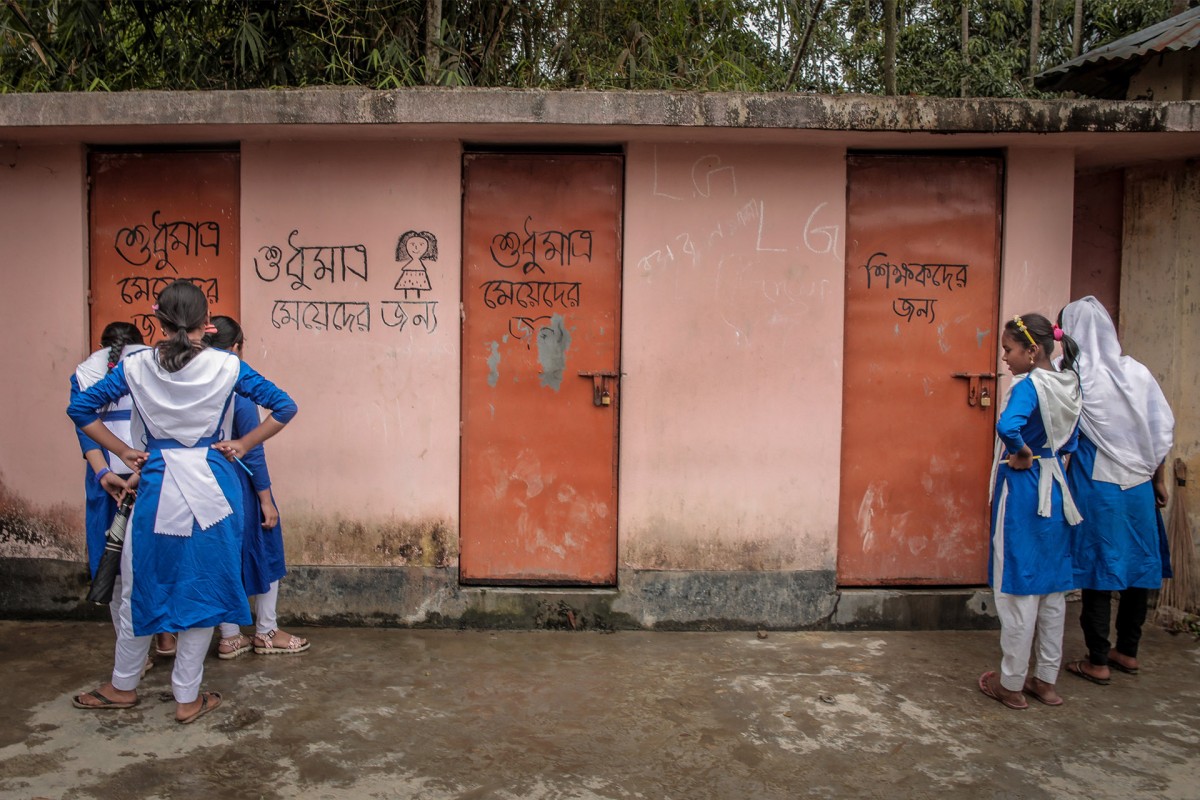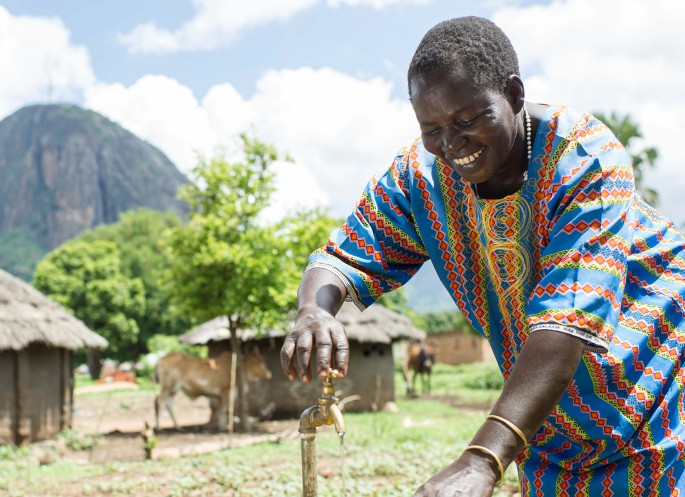Evaluating the impact of the Ritu programme for the future
Simavi’s Ritu programme aimed to improve the menstrual health (MH) of girls in Bangladesh. The programme combined national advocacy and awareness interventions with direct interventions in schools and communities in Netrakona district.
From 2015 to 2020, Simavi worked with BNPS, that implemented menstrual health training for teachers and DORP, that realised gender sensitive toilets through a resource mobilisation method. For more detail you can read the final report.
Evaluating the impact of the Ritu programme
Alongside the Ritu-programme, Simavi conducted a randomised controlled trial (RCT) led by Drs. Lidwien Sol in collaboration with Prof. Eleonora Nillesen (UNU-MERIT) and Prof. Paul Smeets (Maastricht Univeristy) and also Dr. Julie Hennegan at (then) Johns Hopkins Bloomberg School of Public Health (currently Burnet Institute), to evaluate the impact of the programme. This post summarises the most significant impacts of the Ritu programme as measured by the Randomised Controlled Trial and outlined in the impact paper. Simavi uses these outcomes to inform its future programming on menstrual health.
The Randomised Controlled Trial: insight into which intervention is most effective
An RCT is an experimental form of impact evaluation in which different groups receive different interventions. The data gathered in the different groups can be compared amongst each other, thus giving insight into which intervention is most effective.
The main advantage of an RCT is that it controls for factors that are not under the direct influence of the programme, for instance, the distance to school or household composition. As a result, the significant impact measured is most likely a direct consequence of the programme and not of changes in these other factors.
A small but statistically significant change measured in an RCT is therefore already a major result that can support the evidence base not only for the Ritu programme but on MH interventions in general.
The Ritu-RCT was the first to examine the effect of an MH program on MH outcomes as well as educational, psychosocial and empowerment outcomes in Asia.
Three different groups
The data used in the Ritu-RCT was collected from three different groups: Group 1 consisted of girls that received a school programme. Their teachers received training and support to give MH lessons. In addition, gender-sensitive toilets were built in their schools through the mobilisation of funds from existing school and local government budgets.
Group 2 included girls receiving the abovementioned school programme combined with a community programme, consisting of MH education of parents and building gender-sensitive toilets in communities through the resource mobilisation method. Group 3 was a control group that did not receive any intervention.
More likely to discuss menstruation
The RCT shows that MH lessons provided by trained teachers had a positive effect on the menstrual health knowledge of girls. MH test scores in both intervention groups were significantly higher compared to the group of girls that did not receive any intervention. Moreover, the Ritu programme had a positive impact on how comfortable girls are talking about their menstrual health.
For instance, they were more likely to discuss menstruation with parents, friends or teachers. Especially the effect size on teachers is large, with only 6% of girls in the control group ever discussing MH with their teachers compared to 39% (school intervention) and 38% (combined intervention).

How support from male classmates is an important factor
Support of their direct environment, particularly from male classmates, is an important factor in girls’ menstrual health. The RCT showed that girls feel like boys in their school have a better understanding of menstrual health. In the control group, 47% of girls have the impression that boys understand what MH is, compared to a full 100% in the school programme and 97% in the combined programme.
Percentage of girls that have the impression that boys understand what Menstrual Health is
47% of the control group
100% of the school interventions
97% of school and community interventions
Impact on water, sanitation and hygiene
The Ritu programme also increased girls’ access to water, sanitation and hygiene. First, the girl to toilet ratio was measured to see if the resource mobilisation method had a positive impact. The RCT showed that the girl per toilet ratio decreased with roughly 7 girls per toilet for both the school and community intervention The quality of the toilets improved too. Concerning the MH-friendliness of toilets in school, girls were significantly more likely to report that the toilets had soap, a bin, light, water inside and were clean.
Second, Ritu had a significant positive impact on girls’ menstrual practices. Girls that received the intervention changed their menstrual materials more frequently and were also more likely to change their materials whilst at school. Only 13% of girls in the control group ever changed their material at school, compared to 50% of the girls who were part of the Ritu programme. When washing re-usable materials, girls in the Ritu programme were more likely to properly dry their materials: 77% (school intervention) and 84% (combined intervention) hung their washed material outside in the sun, compared to 48% in the control group.

Impact on empowerment and psychosocial well-being
One of the main aims of Ritu was to promote the inclusion of menstruating girls in society, and the RCT shows that the mobility of girls during their menstruation increased significantly; they were more likely to perform daily activities that were traditionally considered taboo for menstruating girls. These findings are important because the results suggest that long-prevailing restrictive beliefs surrounding menstruation can at least partially be changed and the mobility of menstruating girls can be improved.
Percentage of girls believing that menstruating girls should be allowed to go outside
82% of the control group
90% of the school interventions
92% of school and community interventions
The RCT showed strong evidence that the interventions successfully increased psychosocial outcomes as well as confidence during menstruation, both at school and at home. To measure this, girls were asked how often they feel embarrassed or insecure during menstruation. Girls in both groups reported being less embarrassed during their menstruation compared to girls that did not receive any intervention. Only the girls that received the combined program reported being less insecure, the additional community component thus had a slight added value in making girls feel less insecure during their periods.
Percentage of girls expecting their parents to allow a menstruating girl to go outside
78% of the control group
86% of the school interventions
88% of the school and community interventions
Reduction of school absence
An important indicator is whether the Ritu programme affected school attendance, an outcome critical for the general development of adolescent girls. In addition, attendance rates are a good way of measuring if menstruating girls have the knowledge, tools and support they need to be accepted in society and actively participate in daily activities such as coming to school.
The RCT data shows that absence of girls who received the Ritu school intervention reduced by 20.9% compared to the control group. We see a reduction of 13.5% in absence rates of girls who received both the school and the community interventions. The Ritu-RCT is the first to prove the positive impact of an MH programme on school attendance using a comprehensive dataset of school records, survey data and spot-check data to measure attendance. Simavi helped provide academic evidence to prove this positive impact.
The Ritu-RCT is the first to prove the positive impact of an MH programme on school attendance using a comprehensive dataset of school records, survey data and spot-check data to measure attendance.
Menstrual barriers play a vital role in school attendance, but is not the only barrier
The RCT shows no impact on the school attendance rates of girls who did not have their menarche yet, which confirms that girls’ absence rates were reduced due to girls coming to school more often during their menstruation, rather than general increases in school attendance by girls. It is important to note that menstruation is not the only barrier to education for girls.
In fact, in the context of the study, girls reported that bad weather (heavy rain and floods) was the main reason for missing school, followed by being needed at home (see Ritu baseline report). Despite this, the RCT does demonstrate large and significant treatment effects, suggesting that menstrual barriers play a vital role in school attendance and should not be overlooked.
Conclusion
The Ritu RCT provides significant evidence on how a comprehensive menstrual health programme with investments in toilet facilities, as well as provision of MH education and support, can improve menstrual health and lower barriers towards education and personal development of adolescent girls. You can read the full impact paper here.
Interested to learn more?
Then we have some tips for some more reading material:

